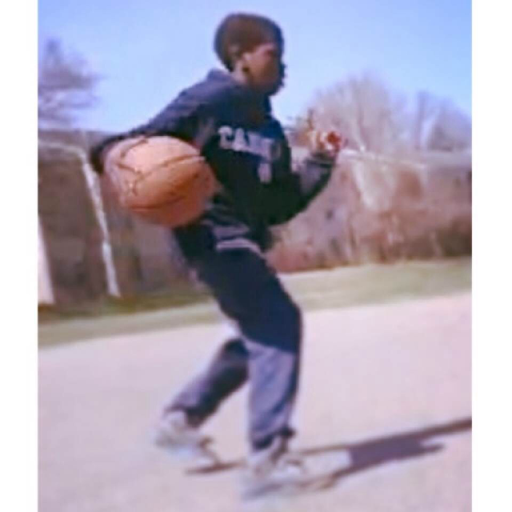Gabriel G White
age ~53
from Sacramento, CA
- Also known as:
-
- Gabe G White
- Gabriel Glenn
- Phone and address:
-
1621 V St, Sacramento, CA 95818
9164435530
Gabriel White Phones & Addresses
- 1621 V St, Sacramento, CA 95818 • 9164435530
- West Sacramento, CA
- Reno, NV
- Hayward, CA
- San Leandro, CA
- Somerset, CA
- Oakland, CA
- Pollock Pines, CA
Resumes

Gabriel White
view source
Gabriel White
view source
Gabriel White
view source
Gabriel White
view sourceLocation:
United States
Medicine Doctors

Gabriel T. White
view sourceSpecialties:
Psychiatry
Work:
Kaiser Permanente Medical GroupKaiser Permanente Medical Center Psychiatry
4660 Palm Ave Bldg A Fl 2, San Diego, CA 92154
8774960450 (phone), 6196625375 (fax)
4660 Palm Ave Bldg A Fl 2, San Diego, CA 92154
8774960450 (phone), 6196625375 (fax)
Education:
Medical School
Wright State University Boonshoft School of Medicine
Graduated: 2007
Wright State University Boonshoft School of Medicine
Graduated: 2007
Conditions:
Anxiety Phobic Disorders
Depressive Disorders
Schizophrenia
Attention Deficit Disorder (ADD)
Autism
Depressive Disorders
Schizophrenia
Attention Deficit Disorder (ADD)
Autism
Languages:
English
Spanish
Spanish
Description:
Dr. White graduated from the Wright State University Boonshoft School of Medicine in 2007. He works in San Diego, CA and specializes in Psychiatry. Dr. White is affiliated with Kaiser Permanente Medical Center.
Isbn (Books And Publications)


Name / Title
Company / Classification
Phones & Addresses
CINEMACHINE STUDIOS LLC
Us Patents
-
Music Steering With Automatically Detected Musical Attributes
view source -
US Patent:8642872, Feb 4, 2014
-
Filed:Jun 4, 2008
-
Appl. No.:12/132621
-
Inventors:Lie Lu - Beijing, CN
Frank Torsten Bernd Seide - Beijing, CN
Gabriel White - San Francisco CA, US -
Assignee:Microsoft Corporation - Redmond WA
-
International Classification:G10H 1/00
G10H 1/18 -
US Classification:84615, 84602, 84603, 84618, 84649, 84653, 84656
-
Abstract:Described is a technology by which a playback list comprising similar songs is automatically built based on automatically detected/generated song attributes, such as by extracting numeric features of each song. The attributes may be downloaded from a remote connection, and/or may be locally generated on the playback device. To build a playlist, a seed song's attributes may be compared against attributes of other songs to determine which other songs are similar to the seed song and thus included in the playlist. Another way to build a playlist is based on similarity of songs to a set of user provided-attributes, such as corresponding to moods or usage modes such as “resting” “reading” “jogging” or “driving” moods/modes. The playlist may be dynamically adjusted based on user interaction with the device, such as when a user skips a song, queues a song, or dequeues a song.
-
Managing Executable Component Groups From Subset Of User Executable Components
view source -
US Patent:20200322472, Oct 8, 2020
-
Filed:Jun 23, 2020
-
Appl. No.:16/909734
-
Inventors:- Bellevue WA, US
Jared T. Benson - Pleasant Hill CA, US
Christian Robertson - Concord CA, US
Shilpa R. Shah - Oakland CA, US
Gabriel J. White - San Francisco CA, US -
International Classification:H04M 1/27457
G06Q 10/10
H04M 1/27453
H04M 1/27475
G06F 3/0482
G06F 3/0484
G06F 3/0488 -
Abstract:Systems, methods, and computer-readable mediums for managing a subset of user contacts on a telecommunications device are provided. In one embodiment, a software application executed by a processor of a telecommunications device determines at least two contact groups from a subset of contacts accessible by a telecommunications device. The software application executed by the processor of the telecommunications device also generates a contact display including a representation of at least a portion of the first or second contact groups and a divider display object. The divider display object partitions the first contact group from the second contact group and is positioned adjacent to at least one contact from the first or second contact groups presented in the contact display.
-
Group Based Information Displays
view source -
US Patent:20200167673, May 28, 2020
-
Filed:Dec 16, 2019
-
Appl. No.:16/715683
-
Inventors:- Bellevue WA, US
Jared T. Benson - Pleasant Hill CA, US
Christian Robertson - Concord CA, US
Shilpa R. Shah - Oakland CA, US
Gabriel J. White - San Francisco CA, US -
International Classification:G06N 5/04
G06Q 10/10
G06Q 50/00 -
Abstract:Group-based information displays correspond to the collection of display objects representative of either contacts associated with a user or applications or executable components executable, or otherwise accessible, via the mobile communication device. The group-based information displays can be logically organized according to subject matter organizational criteria. The subject matter organizational criteria can include, for example, organization or other affiliates criteria, event-based, or activity based criteria, topic-based criteria and the like. Through the group-based information displays, mobile communication device users can initiate one or more actions corresponding to the selection of display objects corresponding to applications or executable components. Additionally, as applicable, the user can limit, or otherwise apply, the initiated actions to contacts identified, or otherwise associated, with the specific group-based information display.
-
Managing Contact Groups From Subset Of User Contacts
view source -
US Patent:20180295223, Oct 11, 2018
-
Filed:Jun 15, 2018
-
Appl. No.:16/009823
-
Inventors:- Bellevue WA, US
Jared T. Benson - Pleasant Hill CA, US
Christian Robertson - Concord CA, US
Shilpa R. Shah - Oakland CA, US
Gabriel J. White - San Francisco CA, US -
International Classification:H04M 1/2745
G06F 3/0482
G06F 3/0488
G06Q 10/10
G06F 3/0484 -
Abstract:Systems, methods, and computer-readable mediums for managing a subset of user contacts on a telecommunications device are provided. In one embodiment, a software application executed by a processor of a telecommunications device determines at least two contact groups from a subset of contacts accessible by a telecommunications device. The software application executed by the processor of the telecommunications device also generates a contact display including a representation of at least a portion of the first or second contact groups and a divider display object. The divider display object partitions the first contact group from the second contact group and is positioned adjacent to at least one contact from the first or second contact groups presented in the contact display.
-
Group Based Information Displays
view source -
US Patent:20170116532, Apr 27, 2017
-
Filed:May 27, 2016
-
Appl. No.:15/167102
-
Inventors:- Bellevue WA, US
Jared T. Benson - Pleasant Hill CA, US
Christian Robertson - Concord CA, US
Shilpa R. Shah - Oakland CA, US
Gabriel J. White - San Francisco CA, US -
International Classification:G06N 5/04
G06Q 50/00 -
Abstract:Group-based information displays correspond to the collection of display objects representative of either contacts associated with a user or applications or executable components executable, or otherwise accessible, via the mobile communication device. The group-based information displays can be logically organized according to subject matter organizational criteria. The subject matter organizational criteria can include, for example, organization or other affiliates criteria, event-based, or activity based criteria, topic-based criteria and the like. Through the group-based information displays, mobile communication device users can initiate one or more actions corresponding to the selection of display objects corresponding to applications or executable components. Additionally, as applicable, the user can limit, or otherwise apply, the initiated actions to contacts identified, or otherwise associated, with the specific group-based information display.
-
Music Steering With Automatically Detected Musical Attributes
view source -
US Patent:20160267177, Sep 15, 2016
-
Filed:May 25, 2016
-
Appl. No.:15/164818
-
Inventors:- Redmond WA, US
Frank Torsten Bernd Seide - Beijing, CN
Gabriel White - San Francisco CA, US -
International Classification:G06F 17/30
-
Abstract:Described is a technology by which a playback list comprising similar songs is automatically built based on automatically detected/generated song attributes, such as by extracting numeric features of each song. The attributes may be downloaded from a remote connection, and/or may be locally generated on the playback device. To build a playlist, a seed song's attributes may be compared against attributes of other songs to determine which other songs are similar to the seed song and thus included in the playlist. Another way to build a playlist is based on similarity of songs to a set of user provided-attributes, such as corresponding to moods or usage modes such as “resting” “reading” “jogging” or “driving” moods/modes. The playlist may be dynamically adjusted based on user interaction with the device, such as when a user skips a song, queues a song, or dequeues a song.
-
Music Steering With Automatically Detected Musical Attributes
view source -
US Patent:20140149468, May 29, 2014
-
Filed:Feb 3, 2014
-
Appl. No.:14/171770
-
Inventors:- Redmond WA, US
Frank Torsten Bernd Seide - Beijing, CN
Gabriel White - San Francisco CA, US -
Assignee:MICROSOFT CORPORATION - Redmond WA
-
International Classification:G06F 17/30
-
US Classification:707803, 707736
-
Abstract:Described is a technology by which a playback list comprising similar songs is automatically built based on automatically detected/generated song attributes, such as by extracting numeric features of each song. The attributes may be downloaded from a remote connection, and/or may be locally generated on the playback device. To build a playlist, a seed song's attributes may be compared against attributes of other songs to determine which other songs are similar to the seed song and thus included in the playlist. Another way to build a playlist is based on similarity of songs to a set of user provided-attributes, such as corresponding to moods or usage modes such as “resting” “reading” “jogging” or “driving” moods/modes. The playlist may be dynamically adjusted based on user interaction with the device, such as when a user skips a song, queues a song, or dequeues a song.
Plaxo

Gabriel White
view sourceSan Francisco / Melbourne
Classmates

Gabriel White
view sourceSchools:
Law Magnet High School Dallas TX 1989-1993
Community:
Sandra Montes, Jose Garcia, Julie Gosnell, Curtis Spear

Gabriel White
view sourceSchools:
Ft. Calhoun High School Ft. Calhoun NE 1989-1992
Community:
Jennifer Ethridge, Nikki Clausen, Tina Collins

Gabriel White
view sourceSchools:
Britton High School Rayville LA 1948-1952
Community:
Marvin Allen, Marie Haynes, Dorothy Davison, Andrew Mansfield, Danny Mansfield, Marge Roberts, Charles Mcclain, Orrel Chatmon, Patricia Burton, Lee Newson

Roman Gabriel White | Met...
view source
Gabriel White, Dublin Hig...
view source
Dublin High School, Dubli...
view sourceGraduates:
Gabriel White (1994-1998),
Diann Mullis (1981-1985),
Raylon Johnson (1979-1983),
Scott Hagler (1978-1982)
Diann Mullis (1981-1985),
Raylon Johnson (1979-1983),
Scott Hagler (1978-1982)
Youtube
Myspace
Googleplus

Gabriel White
Work:
Self Employed (2010)
Education:
Rancho Cotate High School, City College of San Francisco

Gabriel White
Work:
Small Surfaces - Founder & Principal (2010)
Education:
University of Melbourne

Gabriel White
Education:
Eastern Oregon University

Gabriel White

Gabriel White

Gabriel White

Gabriel White

Gabriel White

Blessing Gabriel White
view source
Gabriel White Lance
view source
Gabriel White Jr.
view source
Gabriel White
view source
Gabriel White
view source
Gabriel Olanrewaju White
view source
Gabriel P. White
view source
Gabriel Jibreel White
view sourceFlickr
Get Report for Gabriel G White from Sacramento, CA, age ~53













